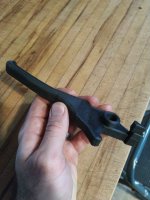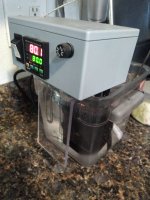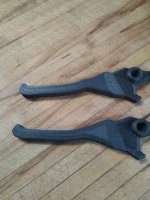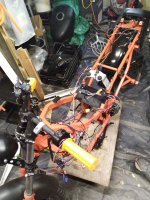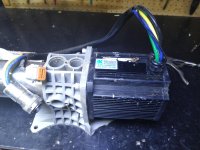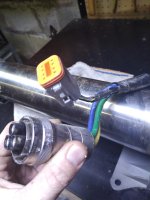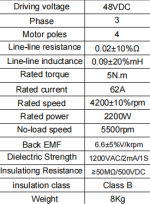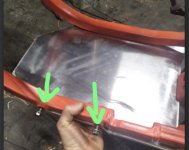Sure; I was just pointing out that it would be easier to put the reduction in the drivetrain itself than rewinding it.

Some probably useless thoughts, since they were in my head anyway:
It shouldn't need a jackshaft, depending on the space available for sprockets and what drive method is used. The motor wouldn't be directly driving a wheel, since it would be sticking pretty far out the side of any two-wheeler that way

so it would need to drive a gear or belt sprocket (or a gearbox that would then drive a chain or belt sprocket), so the reduction could be done right there by using a small motor sprocket and large wheel sprocket, just as you would with any other higher RPM motor. Depending on the wheel size and speed desired, it might need 10:1 to 13:1 or so reduction, which is possible in a single reduction with the right sprocket type, even if it looks odd. Say, a 10 or 11T on the motor, and 100-130T on the wheel.
Not very power-tolerant but 25H chain sprockets are definitely available for 90+ tooth counts (I think I actually have one around here somewhere in that range that I'll probably never use). Larger / more durable chain sizes would need larger diameter sprockets, and that might get awkward with smaller wheels or lower speeds (that need even larger reductions).
BTW, fabrication doesn't always have to be done completely custom--i've learned over the decades to
misuse repurpose bits of other things whole to do things I needed done that they weren't used for originally.

Just takes some pondering to figure out what things would have the stuff I need in them, then acquire one and
rip it's guts out scavenge the bits I need, and often just clamp or bolt all the bits together (not having a welder until the last decade or so I found many ways to do those things instead). Most of these methods are durable enough if done right.

When they aren't then they just get redone until they are.




